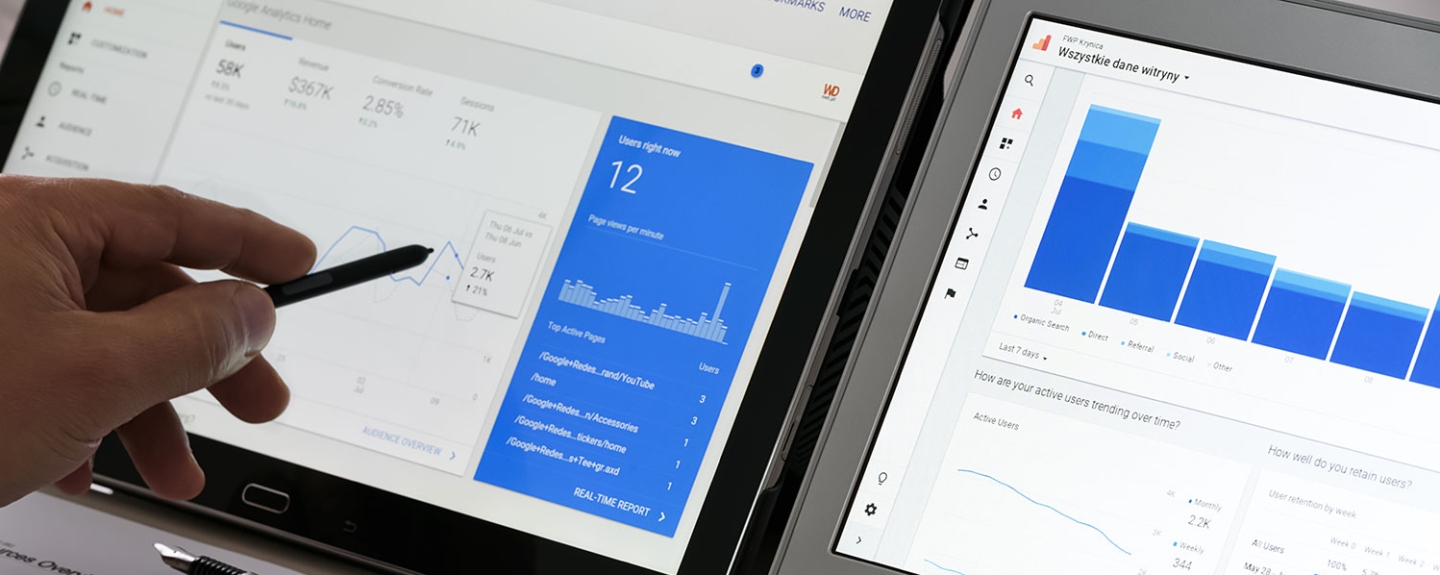Google Analytics is a cornerstone of many digital marketing strategies, but we also understand that smaller businesses and their marketing teams may not have the time to dedicate to it and are focusing on other important aspects of their marketing efforts. That being said, Google Analytics is an extremely powerful tool that can provide insights and reports on your website, customer base and target audience.
1. Traffic Acquisition
One of the most popular and important reports in Analytics is looking at where traffic is originating from. Many marketers are aware of the traffic source report like the one below, however using the more in detail reports is a great way to find out more about certain marketing activities such as email, social and partnerships.
By using Analytics and diving a little bit deeper, we can find out key insights such as:
- Which social platforms are doing the best job at driving traffic and interest to our website?
- Which of our partners are referring engaged users to our website?
- What keywords are users searching for when they find a website?
- Which of our email campaigns are generating the most interest.
2. Demographic breakdown
Alongside where your website traffic originates from (Google, Social media etc.), Analytics can also provide useful demographic information about the users accessing your website. Initially, Analytics can tell you detailed information about your users location, their preferred language and type of devices they are using to access your website.
By enabling Google Signals, Google Analytics can also provide you further insights such as:
- Gender
- Age
- Interests
3. Most popular pages
Understanding the content your audience is most interested in will allow you to create more relevant and interesting content for them to consume. Using Analytics most viewed pages report, you can understand what areas of your website your users are accessing, but also, where they are spending the most time. Using the average time on page metric, we can understand which of your pages are most interesting to your users.
4. Underperforming pages
Google Analytics is a great tool for understanding your audiences and behaviour, it is also crucial for finding out which pages on your website are underperforming and need improvement. This may be that they are not appealing enough for those landing on them (high bounce rate), not engaging with your user base (low avg. time on page) or even causing users to exit your site (high exit %).
While Google Analytics cannot tell you exactly why these pages are underperforming, it is a key indicator that something may be wrong and we would recommend checking the following:
- Is the page broken?
- Is the content engaging enough?
- Are the titles clear and relevant?
- Does the page include images/video/rich media?
- Is the content too long? Or too short?
5. Conversions & form submissions
One of a website's most important functions for many businesses is generating leads/interest in a business via form submissions. Using Google Analytics conversion tracking, GA can provide you with detailed breakdowns as who, when and why users are completing enquiry and other forms on your website. This is especially useful when making decisions over digital marketing channels and attributing lead information as required.
Creating Goals and Conversion events that align with your digital and business goals is crucial to maintaining a successful website and marketing strategy.
6. Donation/Ecommerce tracking
Building on point 5, Google Analytics is also able to track transactions via your website, by using a combination of Google Analytics, Tag Manager and Google Data Layer, you can start reporting on the number of transactions, source of transactions as well as new vs returning customers and type of products/donations among many more reports and reporting and breakdowns. If you are using any sort of paid advertising, the ability to attribute your transactions back to the source is crucial for understanding your ROAS (return on ad spend) alongside a number of other key metrics.
If implementing donation/eCommerce tracking, we recommend using a web developer to help you implement and understand the Google Data Layer.
Summary
In summary, if used correctly, Google Analytics 4 can be an extremely powerful tool for you and your business/organisation. The key to success with Google Analytics is:
- Understanding your key strategic aims
- Implement custom reports & tracking to report on these aims
- Analyse the data provided in a way that allows you to make informed decisions about your marketing strategy.
If you need any assistance with the implementation of Google Analytics 4, understanding how it works or developing a digital marketing strategy, the team at Oyster are on hand to help. We look forward to hearing from you.
Find out more about more about migrating to Google Analytics 4 with one of our migration packages.



